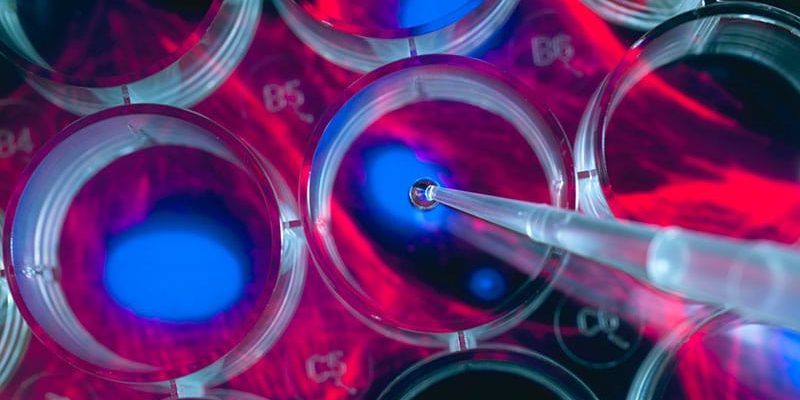In two retrospective studies that drew from the international MSBase registry, autologous hematopoietic stem cell therapy (AHSCT) did not outperform a disease-modifying therapy (DMT) in patients with multiple sclerosis. One study looked at progressive MS and found no evidence of superiority. Another study in relapsing-remitting MS showed a reduction in relapses compared with treatment with the immune reconstitution therapies alemtuzumab and cladribine, though the results were not definitive.
Scant Evidence Supporting AHSCT for Progressive MS
Some previous, small retrospective studies had suggested that AHSCT could benefit progressive MS. For example, a study published in Neurology looked at outcomes following AHSCT in 210 patients with MS and found a disability worsening–free survival of 85.5% at 5 years in relapsing-remitting MS and 71.0% in progressive MS. However, such studies are prone to bias, according to Bruce Cree, MD, PhD, who was asked to comment on the progressive MS study. Both studies were presented at the annual meeting of the European Committee for Treatment and Research in Multiple Sclerosis (ECTRIMS).
AHSCT has attracted interest as a treatment for both relapsing-remitting and progressive MS, and some retrospective studies have reported signals of efficacy for both. Despite that, the biology of progressive MS is inconsistent with an expectation of success, said Tomas Kalincik, MD, PhD, who presented the two studies. “AHSCT is primarily a very potent anti-inflammatory therapy. Therefore, it is assumed that where localized, episodic inflammation is not part of the clinical picture, such as nonactive progressive MS forms, AHSCT should not be more effective than standard DMTs. In fact, in these scenarios, the potent DMTs also show at best marginal effect on disability outcomes. Therefore, the lack of evidence for superiority of the effectiveness of AHSCT over natalizumab in progressive MS is not surprising. The clinical implications of our study therefore are that the use of AHSCT in inactive progressive MS cannot be justified based on the presently available data,” said Kalincik, who is head of neuroimmunology at Royal Melbourne Hospital and head of the Clinical Outcomes Research Unit at the University of Melbourne, in an email exchange.
Cree agreed. “Right now, based on this very, very large data set that MSBase can afford, there really doesn’t seem to be a basis for this presumption that you’re going to get the therapeutic bang for the buck that you want to see with HSCT,” he said.
Despite the scientific attention that AHSCT has received, Cree has never been convinced that AHSCT is likely to be broadly useful in MS. “The simple concept is that MS is an autoimmune disease, so if you can reset the immune system, that you would eradicate MS in that individual, and then that individual would be fine thereafter. It’s a bit naive, but nonetheless, it’s an OK concept to begin a series of studies for investigation. I think there’s a potential place for this in relapsing disease, but when it comes to a cure for progressive MS, everything that we understand about this disease is pointing away from a peripheral immune system inflammatory etiology as the driver for what is causing progression, and so we have to, in my opinion, think about other possible etiologies for what might be driving and underlying disability worsening in progressive MS,” said Cree.
Two Studies
In the progressive MS study, the researchers conducted a propensity-matched analysis of 39 patients treated with AHSCT and 65 who were treated with natalizumab. There were no significant differences between the two groups in overall annualized relapse rate or annual relapse rate by year. Disability outcomes were also similar, with no differences in worsening or improvement.
In the relapsing-remitting MS study, Kalincik’s group drew on data from 6 centers as well as the MSBase registry. They compared outcomes following AHSCT with outcomes of patients taking the immune-reconstitution DMTs mitoxantrone, alemtuzumab, and cladribine. The study included matched cohorts of 135 patients treated with AHSCT versus 312 treated with alemtuzumab, 72 treated with AHSCT versus 164 treated with cladribine, and 30 treated with AHSCT versus 100 treated with mitoxantrone. All groups had similar outcomes, with the exception of a greater likelihood of confirmed disability improvement in treatment with AHSCT versus alemtuzumab (hazard ratio, 1.63; P = .02). The cumulative probability of improvement was higher in the AHSCT group both at year 2 (28% versus 19%) and year 4 (30% versus 22%).
“The analysis suggested trends that may favor the effectiveness AHSCT over alemtuzumab, cladribine, and mitoxantrone, but the analysis was not fully powered. More research with larger cohorts is needed,” said Kalincik.
Cree has consulted for Biogen. Kalincik has financial relationships with Merck, BMS, Roche, Janssen, Sanofi Genzyme, Novartis, Biogen, Eisai, Teva, BioCSL, and Celgene.
This article originally appeared on MDedge.com, part of the Medscape Professional Network.
Source: Read Full Article
